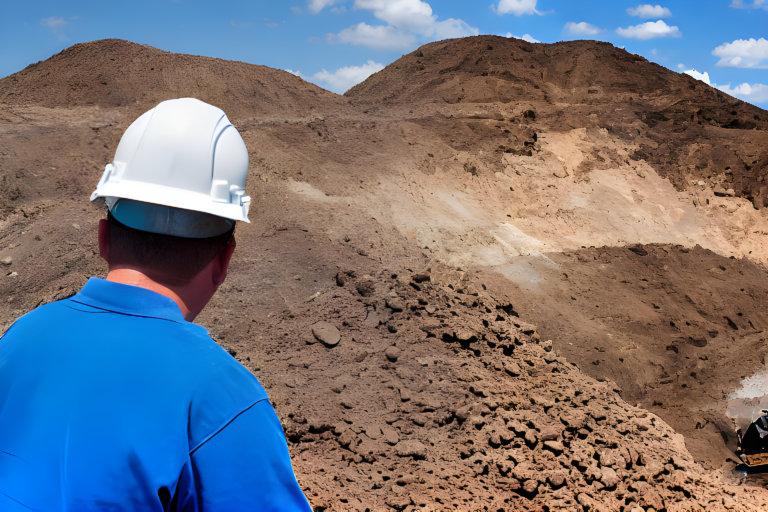The quest for the ideal location for construction aggregate production goes beyond a simple glance at the surface. Geological considerations form the bedrock (pun intended) of any decision to establish a greenfield site for aggregate production. While the presence of the desired resource is a crucial factor, numerous other geological considerations play an equally vital role. Here’s a comprehensive look at both the obvious and the subtle geological factors you should weigh before committing to a site.
1. Presence of Suitable Resources
The mere presence of the desired mineral resource is just the beginning. To understand the true potential of a site, a robust drilling and testing program is essential. This involves core, rotary, or sonic drilling to retrieve samples from various depths, allowing you to analyze the type, quality, and volume of the aggregate. Producing detailed logs from these drills provides insights into the vertical and horizontal spread of the resource. Moreover, rigorous testing of these samples can determine quality and consistency, ensuring that the construction aggregate meets specific standards. Only with this detailed data can one calculate a potential resource, giving a clear picture of the site’s profitability and lifespan.
2. Overburden Management
Overburden—the layer of soil and rock overlying a mineral deposit—can sometimes be excessive and may prove uneconomical to remove and store. Proper geological surveys can provide estimates of the volume of overburden and allow for efficient planning of its removal and disposal.
3. Site Size and Morphology
The size of the site should not only accommodate the extraction of the desired aggregate volume but should also factor in requirements such as sloping, benches, and buffer zones to ensure stability and compliance with safety standards.
4. Water Table Assessment
A crucial yet often overlooked factor is the depth and behavior of the water table. Mining operations can hit a snag if they inadvertently puncture the water table, leading to flooding. Additionally, dewatering solutions might be required, which can be costly and have potential environmental implications.
5. Hidden Dangers: Faults and Geological Anomalies
Understanding the structural geology of a site is essential. Hidden faults or underground anomalies might jeopardize the safety of the operations. Utilizing geophysical methods like seismic surveys or ground-penetrating radar can provide invaluable insights into what lies beneath.
6. Mining Safety
Safety is paramount. Sites with a history of landslides, subsidence, or other geotechnical risks require thorough assessment. The angle of repose, the steepest angle at which a sloping surface is stable, should be identified for different materials to avoid accidental collapses.
7. Mineralogy and Chemistry
The chemical composition of the aggregate can sometimes present unexpected challenges. Some minerals might react adversely with specific chemicals, while others might degrade rapidly when exposed to environmental conditions. A comprehensive mineralogical study can prevent such unwelcome surprises.
8. External Factors
External geological factors, like proximity to volcanic zones or floodplains, could pose operational risks. Such risks might not directly concern the site’s immediate geology but can profoundly impact the longevity and safety of the mining operation.
9. Market Research and Logistics
Beyond geological considerations, understanding the market dynamics and logistical aspects is vital. This is where tools like Mineralocity Aggregates come into play, providing insights into demand, potential markets, and the best transportation routes.
Conclusion
Embarking on the establishment of a greenfield site for aggregate production without comprehensive geological considerations is akin to navigating uncharted waters without a map. From understanding the very anatomy of the site to recognizing external geological threats, an in-depth evaluation paves the way for a successful and safe operation. Armed with these insights and the right tools like Mineralocity Aggregates, you’re poised to make informed decisions that maximize profitability while ensuring safety and sustainability.

Ready to Unlock the Secrets of Successful Greenfield Site Evaluation?
Dive deeper into the world of construction aggregate production with our exclusive Greenfield Guide. Whether you’re a seasoned expert or just embarking on your aggregate adventure, this guide is your roadmap to identifying prime locations, assessing supply potential, and capturing significant market shares. Arm yourself with proven strategies, actionable insights, and essential formulas designed to propel your projects to unparalleled success. Don’t miss this chance to elevate your greenfield endeavors – grab your free copy of the Greenfield Guide now!




